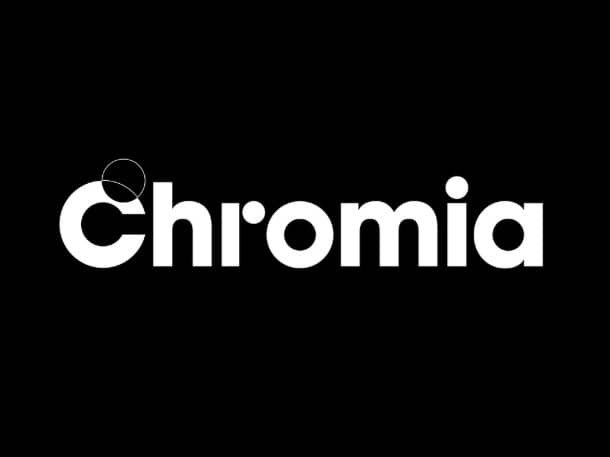위키 구독하기
Share wiki
Bookmark
Chromia
Chromia
**크로미아(Chromia)**는 분산형 애플리케이션(dApp)의 생성 및 운영을 지원하도록 설계된 분산형 플랫폼입니다. 스웨덴 기술 기업인 크로마웨이(ChromaWay)가 개발하여 2018년에 출시한 크로미아는 분산 원장 기술과 관계형 데이터베이스 시스템을 통합합니다. 이러한 접근 방식은 게임, 분산형 금융(DeFi), 디지털 자산 관리와 같은 다양한 산업 분야에서 이전의 분산 시스템에서 관찰된 확장성, 사용 편의성 및 유연성 문제를 해결하는 것을 목표로 합니다. [1] [4] [5]
개요
크로미아(Chromia)는 분산 네트워크 원칙과 관계형 데이터베이스 구조를 결합한 블록체인 플랫폼으로 작동합니다. 이러한 접근 방식을 통해 개발자는 복잡한 데이터 상호 작용을 처리할 수 있는 dApp을 만들 수 있습니다.
주요 운영 특징은 다음과 같습니다.
- 확장성: 플랫폼은 샤딩을 통해 수평적 확장을 지원하여 여러 애플리케이션이 동시에 작동할 수 있습니다.
- 가격 구조: 수수료는 개별 트랜잭션이 아닌 리소스 소비량을 기준으로 계산됩니다.
- 개발 프레임워크: 크로미아는 블록체인 환경을 위해 설계된 Rell이라는 프로그래밍 언어를 사용하며, 여기에는 데이터베이스 쿼리를 위한 SQL과 유사한 구문이 포함되어 있습니다.
- 상호 운용성: 플랫폼은 이더리움(Ethereum)과 같은 네트워크와의 크로스체인 상호 작용을 용이하게 합니다.
크로미아(Chromia)의 아키텍처는 게임 생태계, NFT 플랫폼 및 공급망 관리 시스템을 포함하여 높은 트랜잭션 볼륨이 필요한 분야에서 자주 사용됩니다. [1] [4] [8] [5] [9]
역사
크로미아(Chromia)는 2014년 스웨덴에서 설립된 블록체인 기술 회사인 크로마웨이(ChromaWay)에서 시작되었습니다. 크로마웨이(ChromaWay)의 이전 개발인 Postchain(블록체인 프로토콜과 기존 데이터베이스를 결합한 오픈소스 프레임워크)은 크로미아(Chromia)의 기술적 기반을 형성했습니다.
2018년 크로마웨이(ChromaWay)는 dApp 개발에 중점을 둔 블록체인 플랫폼 계획을 발표했습니다. 9월에 발표된 백서에는 분산 네트워크와 관계형 데이터베이스 효율성을 통합하는 크로미아(Chromia)의 “관계형 블록체인” 모델이 제시되었습니다.
2020년에 출시된 첫 번째 테스트넷(testnet)을 통해 개발자는 기본적인 dApp을 배포할 수 있었습니다. 2021년에 출시된 후속 테스트넷에서는 스테이킹(staking) 메커니즘, 거버넌스 기능 및 이더리움 가상 머신(Ethereum Virtual Machine, EVM)과의 호환성이 도입되었습니다.
2022년부터 2023년까지 크로미아(Chromia)는 마인플렉스(Mineplex)(게임) 및 헤데라 해시그래프(Hedera Hashgraph)(상호 운용성)와 같은 프로젝트와 파트너십을 맺었습니다. 또한 해커톤 및 자금 지원 프로그램을 포함한 개발자 중심의 이니셔티브를 조직했습니다. 2023년 현재 크로미아(Chromia)는 개발 중이며 메인넷(mainnet) 출시 계획이 진행 중입니다.
메인넷(Mainnet) 출시
크로미아(Chromia)의 메인넷(mainnet)은 2024년 7월 16일 개발에서 운영 상태로 전환되었으며, 최소 기능 제품(MVP) 단계부터 시작되었습니다. MVP는 독립적인 서브네트워크(클러스터)가 사용자 지정 합의 규칙을 사용하여 dApp을 호스팅하는 클러스터 기반 아키텍처와 같은 핵심 기능을 도입했습니다. 이 단계별 출시는 안정성을 우선시하여 초기 클러스터는 크로마웨이(ChromaWay)와 선택된 파트너가 운영했습니다.
메인넷 출시 중에 활성화된 주요 기술 기능은 다음과 같습니다.
- EVM 호환 사이드체인: 이더리움 기반 애플리케이션과의 상호 운용성을 가능하게 합니다.
- 수수료 모델 구현: CHR 토큰으로 지불되는 트랜잭션 수수료는 공급을 관리하기 위해 부분적으로 소각됩니다.
- 스테이킹(Staking) 활성화: 토큰 보유자는 네트워크 보안 및 거버넌스 참여를 위해 노드 운영자에게 CHR을 위임할 수 있습니다.
2024년 9월 출시 후 업데이트를 통해 외부 개발자에게 클러스터 접근성이 확대되었으며 크로스체인 통신 프로토콜이 개선되었습니다. [8] [11] [12] [13] [14] [15] [16]
기술
크로미아(Chromia)의 아키텍처는 다음 구성 요소를 통합합니다.
- 데이터는 관계형 구조로 구성되어 쿼리 기반 검색을 가능하게 합니다. 각 dApp은 클러스터라고 하는 독립적인 사이드체인에서 작동하며, 특정 합의(consensus) 매개변수로 구성할 수 있습니다.
- 트랜잭션은 BFT(Byzantine Fault Tolerance) 기반 알고리즘을 사용하여 검증됩니다. 네트워크 참여자는 거버넌스 결정에 영향을 미치기 위해 CHR 토큰을 스테이킹(staking)할 수 있습니다.
- Rell은 SQL과 유사한 구문과 스마트 계약(smart contract) 검증을 위한 자동화된 도구를 갖춘 블록체인 개발을 위해 맞춤화되었습니다.
- 개발자는 사용자를 위한 트랜잭션 비용을 부담하며, 수수료는 CHR 토큰으로 지불됩니다. 이러한 토큰의 일부는 영구적으로 유통에서 제거됩니다.
CHR 토큰
CHR 토큰은 플랫폼의 기본 암호화폐(cryptocurrency)로 기능합니다. 주요 용도는 다음과 같습니다.
- 트랜잭션 및 dApp 배포 수수료 지불
- 스테이킹(staking)을 통한 네트워크 거버넌스 참여
- 스테이킹(staking) 메커니즘을 통한 보상 획득
잘못된 내용이 있나요?
